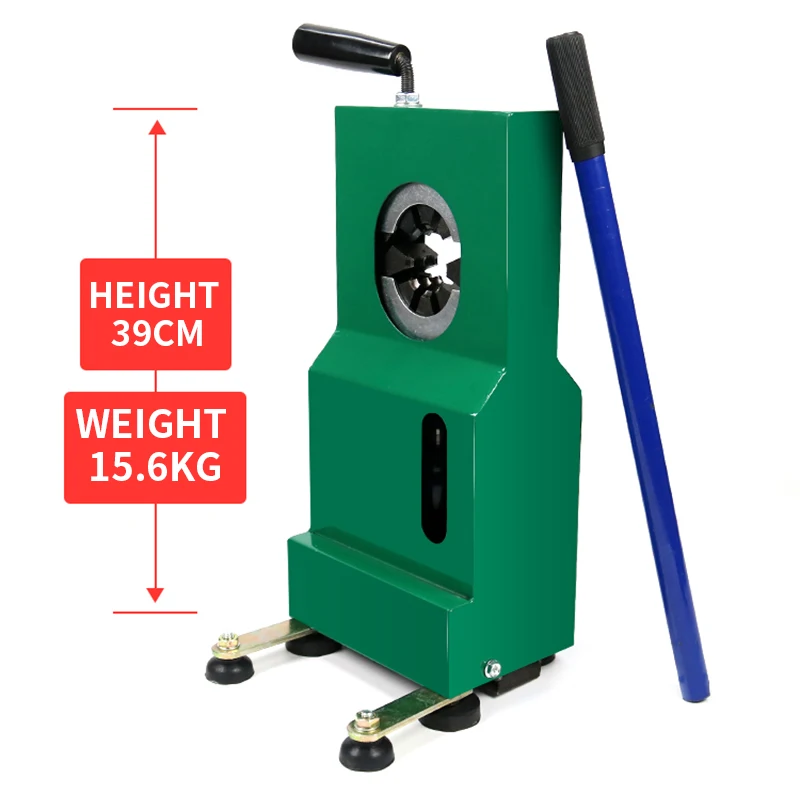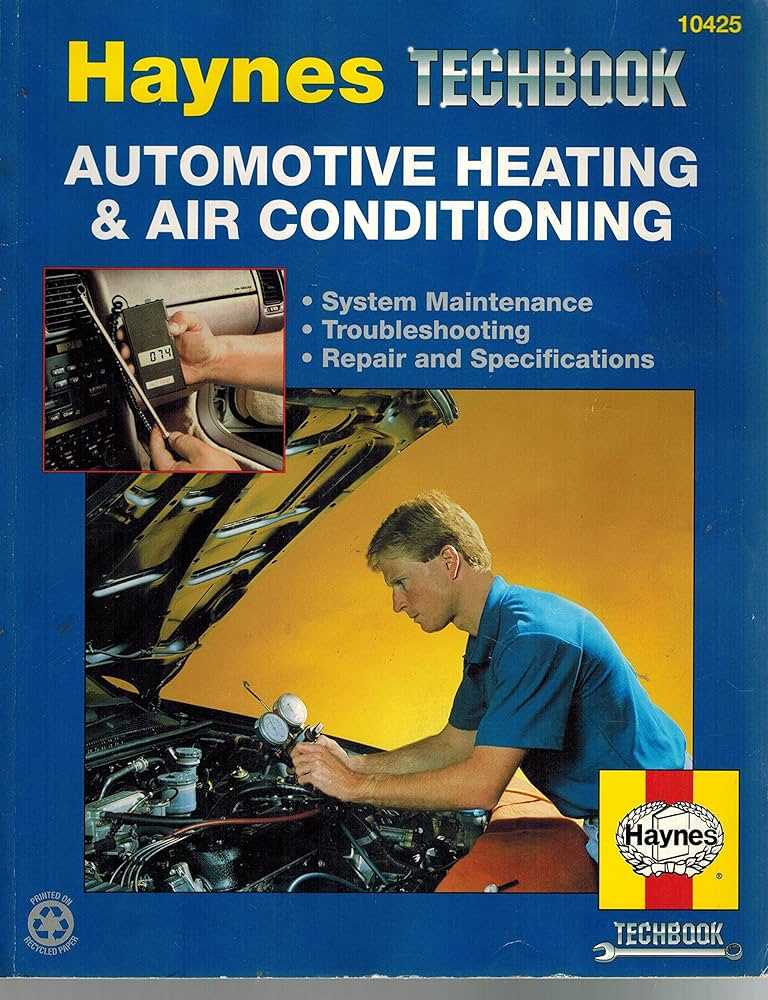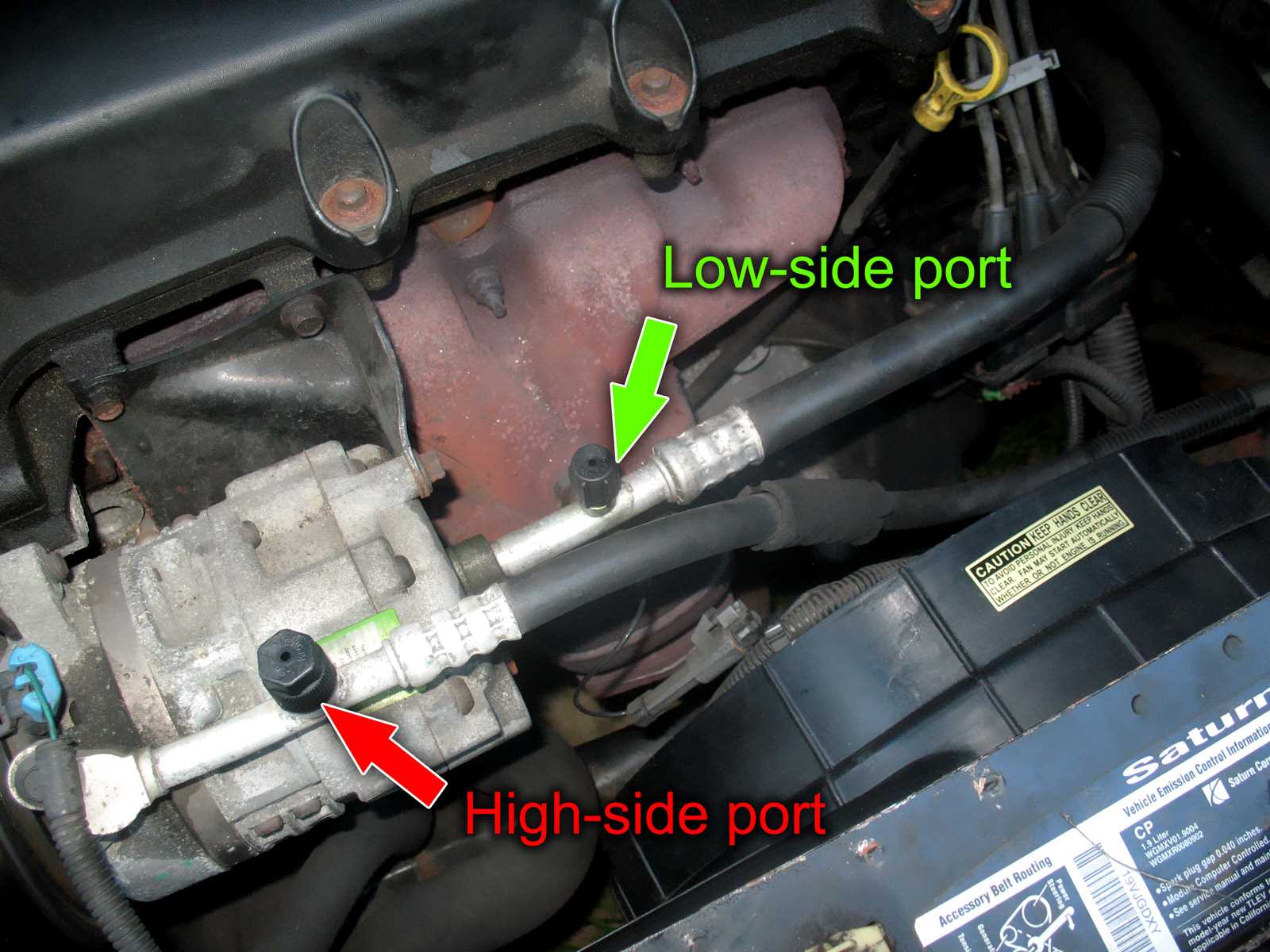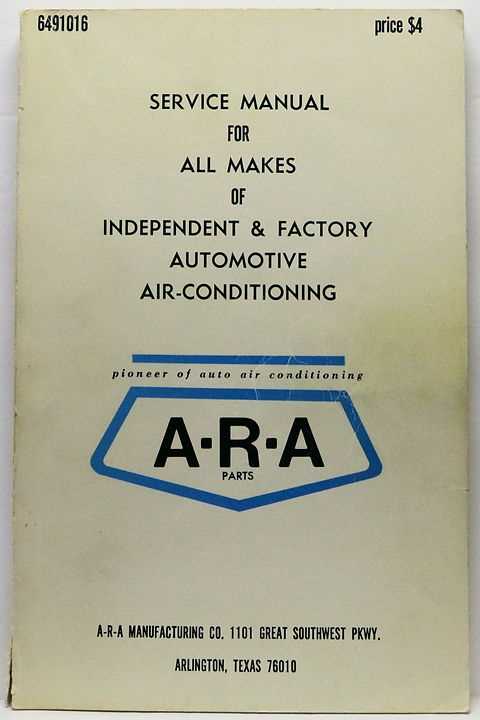Comprehensive Guide to Auto Air Conditioning Repair

Ensuring a comfortable atmosphere inside your vehicle is essential for an enjoyable driving experience. A well-functioning climate management system plays a crucial role in regulating temperature and providing relief from external elements. Understanding its components and operations can empower you to address common issues effectively.
In this section, we delve into the intricacies of the system that keeps your interior environment pleasant. By familiarizing yourself with various parts and their functions, you can better recognize symptoms of malfunction and take appropriate steps to restore efficiency. This knowledge not only saves you time but also helps you make informed decisions regarding service options.
Equipping yourself with the right information is key to maintaining optimal performance. Whether you are a seasoned enthusiast or a novice, learning about troubleshooting techniques and routine maintenance tasks can enhance your confidence in handling challenges that may arise. With a proactive approach, you can ensure that your driving experience remains comfortable, no matter the weather outside.
Understanding Auto Air Conditioning Systems
This section delves into the fundamental principles behind climate control systems found in vehicles. These systems play a crucial role in maintaining a comfortable environment within the cabin, ensuring optimal comfort regardless of external weather conditions. By comprehending the components and their interactions, one can appreciate the intricacies involved in providing a pleasant driving experience.
Key Components of Climate Control Systems
Every system consists of several essential parts that work together seamlessly. The main elements include the compressor, evaporator, condenser, and expansion device. Each component has a specific function: the compressor circulates refrigerant, the evaporator absorbs heat, the condenser releases heat, and the expansion device regulates refrigerant flow. Understanding these roles is vital for diagnosing issues and ensuring efficient operation.
How the System Functions

The process begins when the compressor pressurizes the refrigerant, which then flows to the condenser. Here, heat is expelled to the outside environment, transforming the refrigerant from gas to liquid. The liquid refrigerant then travels to the expansion device, where it undergoes a pressure drop, allowing it to evaporate in the evaporator. This evaporation process absorbs heat from the cabin, creating a cooling effect. This cycle repeats continuously to maintain the desired temperature.
Common Signs of AC Problems
Understanding the indicators of system malfunctions is crucial for maintaining optimal performance and comfort. Recognizing these signs early can prevent further issues and costly fixes. Here are some common symptoms to watch out for.
Unusual Noises
Strange sounds, such as grinding, hissing, or clanging, can signal underlying issues. These noises often indicate that components are not functioning as they should or may be damaged. It’s essential to address these sounds promptly to avoid extensive damage.
Inconsistent Temperature
If the environment is not cooling evenly, it may suggest a malfunctioning unit. Fluctuations in temperature can result from various factors, including refrigerant leaks or blockages in the system. Ensuring a consistent climate is vital for comfort and efficiency.
Monitoring these indicators is essential for maintaining a well-functioning system. If you notice any of these symptoms, consider seeking professional assistance to diagnose and resolve the issues effectively.
Essential Tools for AC Repair
When tackling issues related to temperature regulation systems, having the right equipment is crucial for effective diagnostics and fixes. A well-equipped toolkit not only streamlines the troubleshooting process but also enhances safety and efficiency. Below are some of the fundamental instruments that every technician should have on hand.
Basic Diagnostic Equipment

Starting with diagnostic tools, pressure gauges and refrigerant scales are indispensable for assessing system performance. These instruments help measure the pressure levels within the unit, allowing for accurate evaluation of potential leaks or malfunctions. Additionally, multimeters are essential for checking electrical components, ensuring all connections are functioning correctly.
Specialized Repair Tools
In addition to basic tools, specialized equipment such as manifold gauge sets and recovery machines play a vital role in the maintenance process. Manifold gauges provide insights into the operational status of the system, while recovery machines facilitate safe refrigerant handling. Furthermore, tube benders and crimping tools are necessary for making precise adjustments to piping, ensuring optimal flow and functionality.
Step-by-Step AC Troubleshooting Guide
Maintaining optimal comfort in your vehicle relies on a well-functioning climate control system. When issues arise, systematic diagnosis is key to identifying and resolving the problems effectively. This guide provides a structured approach to troubleshooting common malfunctions.
Identifying the Symptoms
Start by noting the specific issues you’re experiencing. Is the system not cooling effectively, making unusual noises, or emitting strange odors? Documenting these symptoms will help narrow down potential causes and streamline the troubleshooting process.
Systematic Checks
Begin with the simplest checks before moving on to more complex components. Inspect the fuses related to the system to ensure they are intact. Next, check the settings on your control panel to confirm that they are properly configured. If the problem persists, examine the refrigerant levels, as insufficient fluid can significantly impact performance.
How to Recharge Your AC System
Maintaining optimal performance of your climate control system is crucial for a comfortable ride. Over time, the refrigerant levels may drop, leading to decreased efficiency. This section provides a straightforward guide to restoring the necessary fluid levels, ensuring your system operates at its best.
Gathering Required Tools and Materials
Before starting, collect the essential tools: a refrigerant gauge set, a vacuum pump, and the appropriate refrigerant for your system. It’s important to choose a product that matches the specifications outlined in your vehicle’s documentation. Safety gear, such as gloves and goggles, should also be on hand to protect yourself during the process.
Steps to Recharge the System
Begin by connecting the refrigerant gauge to the service port. This allows you to check the existing pressure levels. If they are low, proceed to add the refrigerant. Start the engine and turn on the climate control to its maximum setting. Gradually release the refrigerant into the system, monitoring the gauge to avoid overfilling. Once the recommended pressure is achieved, disconnect the gauge and check for any leaks to ensure the integrity of the system.
Important: Always follow safety guidelines and consult your vehicle’s specifications to ensure proper handling and usage of refrigerants.
Diagnosing Refrigerant Leaks Effectively

Identifying leaks in cooling systems is crucial for maintaining optimal performance and efficiency. Recognizing the signs of refrigerant loss can help prevent further complications and costly repairs. This section outlines effective methods for detecting such issues, ensuring your system operates smoothly.
Common symptoms of refrigerant leaks include poor cooling performance and unusual noises. Addressing these symptoms early can save time and resources. Below are some proven techniques to pinpoint leaks accurately:
| Method | Description |
|---|---|
| Visual Inspection | Examine components for oil stains or discoloration, which can indicate the presence of refrigerant. |
| Soap Solution | Apply a soap and water mixture to suspect areas; bubbles will form at the leak site. |
| Electronic Leak Detectors | Use specialized devices that sense the presence of refrigerant gases in the environment. |
| Ultraviolet Dye | Add a UV dye to the system; use a blacklight to locate the dye at the leak point. |
Implementing these techniques systematically will enhance your ability to detect and address refrigerant leaks efficiently. Regular maintenance checks can also help mitigate issues before they escalate.
Replacing AC Components: A Guide

Maintaining a comfortable interior climate in your vehicle often requires attention to specific components. When these elements begin to fail, timely replacement is crucial for optimal performance. This guide will help you navigate the essential steps and considerations for replacing these vital parts.
Identifying Faulty Parts
Before proceeding with any replacements, it’s important to accurately diagnose the issues. Common indicators of malfunction include unusual noises, reduced efficiency, and leaks. Conducting a thorough inspection can pinpoint the exact component that needs attention. Utilize tools such as pressure gauges and visual assessments to determine the source of the problem.
Replacement Process
Once the faulty part has been identified, gather the necessary tools and components for replacement. Start by disconnecting the power supply to ensure safety. Remove the defective part carefully, taking note of the installation process for reference. Follow manufacturer guidelines for the new component’s installation, ensuring all connections are secure. Finally, test the system to confirm that the replacement has resolved the issue.
Remember, maintaining the performance of your vehicle’s climate control system is essential for comfort and functionality. Regular checks and timely replacements will help prolong the lifespan of these components.
Maintaining Your Vehicle’s AC Unit
Ensuring optimal performance of your vehicle’s climate system is essential for comfort and efficiency. Regular maintenance helps to prevent breakdowns and prolongs the lifespan of the components involved. Here are some key practices to keep in mind.
- Regular Inspections: Check the system periodically for any signs of wear or damage.
- Change Filters: Replace cabin and intake filters as recommended to maintain air quality and efficiency.
- Monitor Refrigerant Levels: Ensure that the coolant levels are sufficient, as low levels can hinder performance.
Additionally, following these steps can enhance your system’s functionality:
- Run the system regularly, even during cooler months, to keep components lubricated.
- Clean the condenser and evaporator to prevent dirt buildup that can restrict airflow.
- Look out for unusual noises or smells that could indicate underlying issues.
By adhering to these maintenance tips, you can ensure that your vehicle’s climate control system operates smoothly and reliably.
Understanding AC System Pressures
Grasping the principles of pressure within a cooling system is essential for diagnosing performance issues and ensuring optimal function. The pressure levels in various components reflect the system’s efficiency and health, and recognizing these indicators can prevent costly failures and enhance comfort.
Types of Pressures
In a typical setup, there are two main categories of pressure: low and high. The low-pressure side is responsible for absorbing heat, while the high-pressure side compresses the refrigerant. Understanding the relationship between these two sides allows for effective troubleshooting and maintenance.
Normal Operating Ranges
Each system has its own specifications regarding pressure ranges. Monitoring these levels is crucial. If the low-pressure reading is too high or the high-pressure reading is too low, it could indicate issues such as refrigerant leaks or blockages. Regular checks can help identify potential problems before they escalate.
Tips for DIY Air Conditioning Repair
Maintaining your vehicle’s climate control system can be a rewarding endeavor, allowing you to save on costs and gain valuable skills. With the right approach, you can tackle common issues that may arise without relying solely on professionals. Here are some essential suggestions to help you navigate this process effectively.
1. Understand the System: Familiarize yourself with the components of the cooling mechanism. Knowing how each part functions will help you identify potential problems and solutions.
2. Gather the Right Tools: Equip yourself with essential tools such as gauges, wrenches, and screwdrivers. Having the appropriate equipment on hand will streamline your troubleshooting efforts.
3. Safety First: Always prioritize safety. Wear protective gear, work in a well-ventilated area, and ensure the engine is off before starting any work. This reduces the risk of accidents.
4. Check for Leaks: One of the most common issues is leakage. Inspect hoses and connections for any signs of fluid escaping, as this can severely impact performance.
5. Regular Maintenance: Perform routine checks and maintenance on the system to prevent future problems. Cleaning filters and checking refrigerant levels can make a significant difference.
6. Document Your Work: Keep a record of any changes or repairs you make. This documentation can be helpful for future reference or if you decide to consult a professional later on.
With patience and attention to detail, you can successfully troubleshoot and resolve many common issues on your own, enhancing both your knowledge and your vehicle’s performance.
When to Seek Professional Help
Understanding when to consult an expert is crucial for maintaining the efficiency of your vehicle’s climate control system. While some issues can be handled with basic troubleshooting and minor fixes, others may require specialized knowledge and tools that only a professional can provide.
If you notice persistent unusual noises, fluctuating temperatures, or a complete lack of functionality, it may indicate underlying complications that need immediate attention. Additionally, if you find yourself frequently topping off refrigerants or experiencing unusual smells, these are clear signs that professional assessment is warranted.
Furthermore, if your attempts at DIY solutions have not yielded satisfactory results, enlisting the help of a trained technician can save you time and prevent potential damage to the system. It’s essential to prioritize your safety and the performance of your vehicle, making expert assistance a valuable resource when needed.